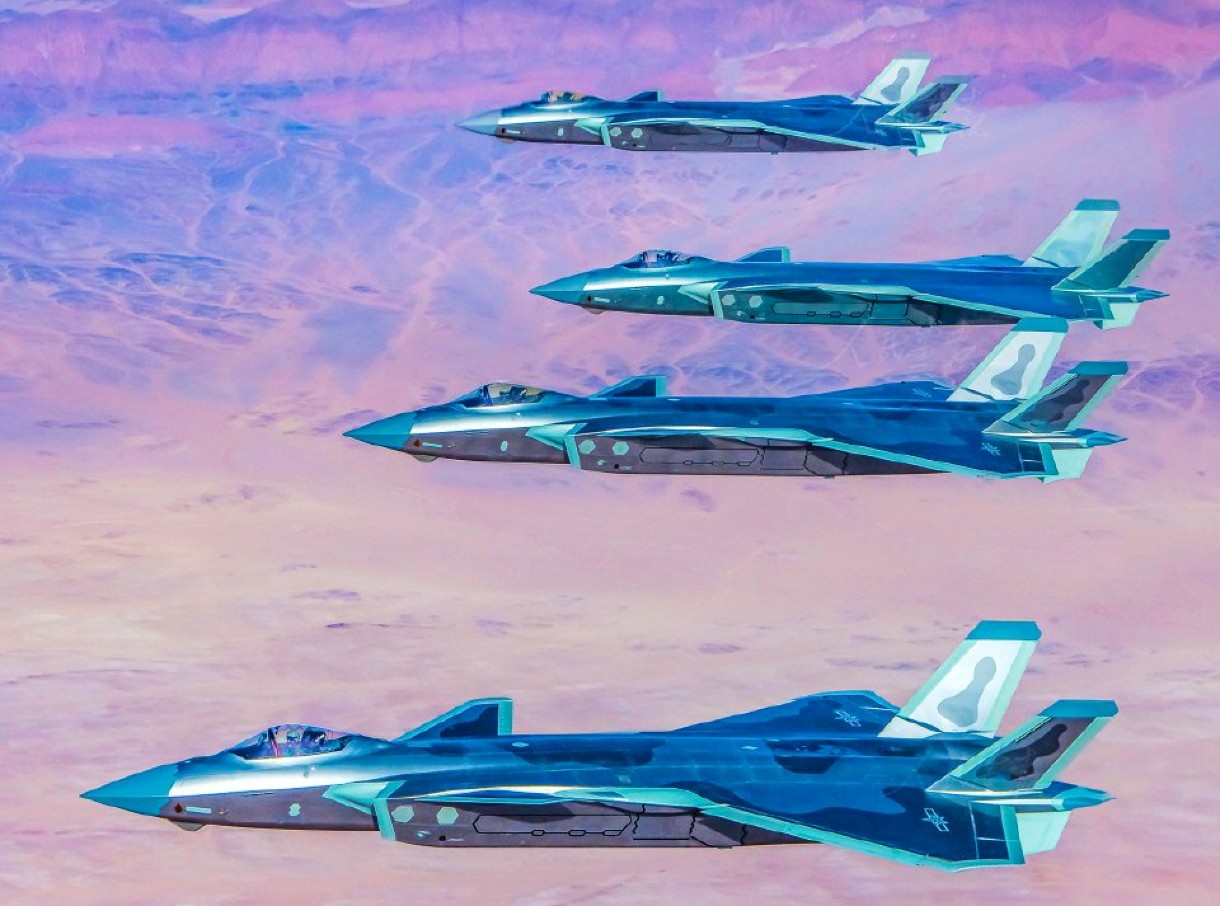China’s most sophisticated J-20A stealth fighters inventory is expected to surpass the US Air Force’s F-22 Raptor this year, indicating that Beijing could outperform Washington in stealth fighter production.
On February 15, the head of the London-based International Institute for Strategic Studies stated that Beijing’s fighter aircraft fleet has evolved over the past five years and anticipated its stealth fighter inventory would soon surpass that of the United States F-22s.
John Chipman, director-general and chief executive of IISS, provided reporters with information regarding China’s expanding fleet of stealth fighters at an online launch event for The Military Balance 2023.
According to Chipman, the Military Balance database lists over 150 J-20A fighters. Although the United States is also growing the number of its fifth-generation F-35As, currently standing at about 360, he pointed out that the rate of China’s defense industrial output indicates that it is catching up.
Chipman said that if deliveries proceed at the current rate, the J-20A fleet will outnumber the F-22 by the end of this year.
In November 2022, it was reported that Beijing employed top-notch pulsating production lines to accelerate the delivery of its cutting-edge J-20 Mighty Dragon stealth jet fighters.
At the time, the EurAsian Times reported that the pulsating production lines and homegrown engines had pushed the number of J-20s to catch up to—or perhaps surpass—the number of the US F-22 Raptors.
According to past estimates, China has built more than 150 J-20 planes. On the other hand, the US Air Force initially intended to purchase 750 F-22s to create a sizable fleet of stealth fighters for the twenty-first century.
However, just 186 fighters were produced before its production lines were closed in 2012 due to Washington’s conclusion that it was not cost-effective to utilize such pricey aircraft for counterterrorism and counterinsurgency operations.
The United States has now turned its focus to the F-35s, which are thought to be more affordable and versatile. However, the F-22 is expected to be in service until 2030, giving the US Air Force air superiority.
The J-20 was built to compete with the F-22, US’ first fifth-generation fighter. Several reports have previously suggested that the US only has fewer than 100 Raptors in combat conditions. The US’s next-generation fighter plane, presently being developed, will eventually replace the Raptors.

The Modernization Of PLA Air Force
Generally speaking, the enhanced J-20 production was planned to offset the US’ growing deployment of the F-22, a dominant air superiority aircraft, and the F-35, another fifth-generation stealth jet fighter, to the region.
While China has not officially provided any information regarding the number of J-20s deployed, a PLA Air Force spokesperson had previously stated that they are operational in all five PLA theater commands.
The J-20 stealth fighter jet is frequently portrayed in Chinese media as a crucial tool to deter the US and its allies in the case of a Taiwan Strait crisis and the centerpiece of any air warfare Beijing may participate in.
For instance, in reaction to US Speaker Nancy Pelosi’s trip to the island nation in August, the PRC deployed the J-20 for the first time in live-fire military exercises near Taiwan.
The J-20 was displayed to the public at the Zhuhai Air Show months later, where two aircraft touched down and stayed for a short while.
The US is aware of how the J-20’s diverse capabilities may impact the overall force projection of the Chinese air force in the region.
According to a 2016 USA Department of Defense assessment, China’s development of the J-20 was a critical step in the nation’s objectives to improve its ability to project force globally and to attack nearby airbases and facilities.
The People’s Liberation Army will receive a boost of almost $16 billion from China’s nominal 7 percent rise in the 2022 defense budget, according to The Military Balance, making it the PLA’s largest annual increase in absolute terms.
According to the report, these funds are allowing the PLA to continue modernizing, resulting in the deployment of aircraft carriers, more sophisticated frigates, and destroyers, as well as the JL-3, a new, longer-range submarine-launched ballistic missile.
The Military Balance also noted that the JL-3 could allow the PLA Navy to strike the United States from longer ranges than before, providing options to improve its deterrent’s survivability.
Experts have pointed out that the JL-3 has a much greater range than China’s JL-2 missiles. Instead of needing to enter the Pacific Ocean, this missile would enable Beijing to station its ballistic missile submarines in the South China Sea and attack the US from there.
- Contact the author at ashishmichel(at)gmail.com
- Follow EurAsian Times on Google News




